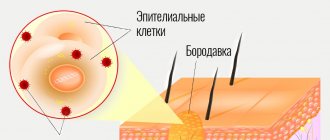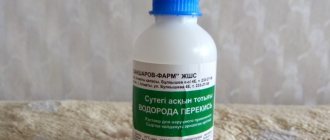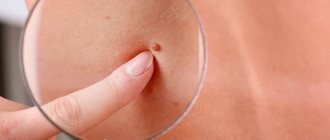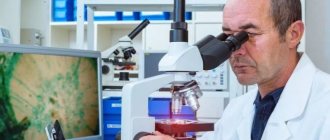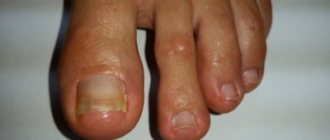A plantar wart is a benign growth that develops on the foot, sole, or other parts of the lower extremities. The disease affects people of any age, children, women, men and even pregnant women. The pathological condition has a slow progression and significantly complicates the patient’s quality of life. To eliminate growths on the surface of the skin, various medications are used in the form of ointments and patches, as well as folk remedies. If it is necessary to quickly get rid of a tumor in a hospital setting, hardware technologies are used that eliminate the problem in a few sessions.
- Bath with soda and soap
Types and reasons
Warts are:
There are a lot of varieties of warts; they are classified according to a number of characteristics:
- Simple. They occur on exposed parts of the body, arms, legs, face, and scalp. They are usually not dangerous, but they are not aesthetically pleasing and can multiply quickly, affecting large areas of the skin. They are arranged as if in “families”.
- Plantar. Their localization is exclusively on the feet. Causes discomfort when walking.
The main cause is infection with the human papillomavirus, which affects the mucous membranes and skin.
Treatment of osteophytes
Treatment of osteophytes of the knee joint, spine or any other location always begins with treatment of the underlying disease due to which they appeared. The fight against the bone outgrowths itself is carried out in several directions:
- drug therapy to relieve pain and inflammation, restore tissue trophism and prevent further joint destruction (anti-inflammatory drugs, angio- and chondroprotectors);
- therapeutic exercises (relieve muscle spasms and reduce the load on sore joints, improve metabolism in tissues);
- physiotherapeutic treatment (the doctor chooses the method taking into account the location and type of osteophytes);
- maintaining a healthy lifestyle and daily activity (patients should give up bad habits, walk as much as possible, swim, choose active types of recreation);
- massage and self-massage, as well as the use of orthoses (collars, corsets, walking aids);
- following a non-strict diet (foods rich in calcium and magnesium are recommended, such as fish, seafood, nuts and seeds, spinach and other greens, legumes and dairy products - in the absence of contraindications due to metabolic diseases). Patients should avoid sweet, smoked and highly salty foods, as well as any semi-finished products (except homemade preparations) and fast food. Overweight people need to lose weight to successfully treat osteophytes.
Although osteophytes cannot always be completely eliminated with conservative treatment alone, it can reduce their size and completely stop the progression of the pathology. In advanced cases, surgical removal of osteophytes and part or all of the joint is performed.
.
Physiotherapy
Taking courses of physiotherapy helps stop the growth of osteophytes, support joints and significantly alleviate the patient’s condition. To combat the problem, methods such as:
- shock wave therapy
; - electrophoresis
(especially with medications - glucocorticoids, lithium, sulfur, zinc); - phonophoresis with analgesics
; - diadynamic therapy
; - galvanization with caripain
; - massotherapy;
- balneotherapy
(radon, turpentine baths),
mud therapy
; - kinesiotherapy and therapeutic exercises.
Most physiotherapeutic procedures are contraindicated in the presence of cancer and cardiovascular diseases.
Drug treatment
Local drug treatment of osteophytes is carried out in the early stages of the disease and consists of rubbing in warming, anti-inflammatory, locally irritating compounds (ointments, gels, creams and balms). Patients can also do baths and compresses. In all other cases, you need to take pills, and sometimes even injections.
The following groups of drugs are used to treat osteophytes in the spine and joints:
- Non-steroidal anti-inflammatory drugs.
- Glucocorticoids.
- Chondroprotectors (Artracam)
are the only group of drugs that can prevent the destruction of cartilage and joint tissue, as well as start the processes of its regeneration. Other medications are usually used for symptomatic relief. - Muscle relaxants.
- Vitamin and mineral preparations.
In case of severe pain, when it is not possible to urgently consult a doctor, temporary use of simple analgesics is allowed (taking into account their side effects).
Surgery
Surgical treatment of osteophytes of the spine and joints is carried out at the 4th stage of the disease, in which the patient suffers from chronic pain that is not amenable to drug therapy. Such cases include late stages of spondylosis with ring-shaped osteophytes and other severe conditions. A timely operation allows you to save the nervous tissue from irreversible changes and eliminate pain
, and in some cases, even return a certain range of movements.
Minimally invasive operations with a short recovery period are performed in situations where bone spurs pose a serious threat to blood flow and nerve endings and entail severe symptoms, as well as interfere with the patient’s movement and are accompanied by severe pain.
Surgical treatment of spinal osteophytes is carried out in the case of massive growths that disrupt the functions of tissues in the places of occurrence.
In case of degenerative joint diseases, not only the osteophyte is removed, but also excess bone tissue. In the case of knee, elbow and some other joints, joint replacement is indicated.
Please note that gentle arthroscopic operations do not relieve the patient of responsibility for his joints
: after removal of osteophytes, new ones may grow in their place if the patient is not concerned about his health.
Take care of yourself and be happy!
Human papillomavirus
This is one of the most common viruses on Earth. Infection can occur in several ways:
- contact and household (through touch);
- sexual (genital, anal, oral-genital);
- in childbirth from mother to child.
The period of development of the disease ranges from several weeks to tens of years, this is explained by the fact that the virus may not manifest itself for a long time, but as soon as the immunity becomes a little weaker, growths immediately appear on the skin and/or mucous membranes. The main danger of this disease is that certain types of HPV are highly likely to cause the formation of a malignant tumor (cancer of the skin or mucous membranes). To make sure that the disease will not lead to the formation of a tumor, it is necessary to undergo examination by a doctor and not self-medicate.
Home Remedies
You can remove a wart yourself using alternative medicine recipes. They are relatively safe and in many cases approved for use during pregnancy and for young children.
At home, recipes based on natural ingredients are most often used. Their disadvantage will be a long treatment period and the appearance of scars after removal.
Bath with soda and soap
Regular use of the procedure will help soften the skin of the feet, which will facilitate the effects of other products. To prepare such a bath you need:
- Heat 2 liters of water to a comfortable temperature.
- Add 30 g of soda and the same amount of liquid tar soap.
- Dissolve the ingredients and soak your feet for 20 minutes.
The number of procedures is at least 3 per week. The recipe can be used for women during pregnancy, men and children over 2 years of age. The only contraindication will be an allergic reaction to any of the components of the composition.
Steaming with lemon juice
An effective recipe that helps soften the skin and prevent the appearance of new warts is prepared as follows:
- Prepare 2 liters of hot water, cool to a comfortable temperature.
- Squeeze the juice of 1 lemon using a juicer and add to water.
- The time of the home procedure is 15-25 minutes.
The manipulations should be repeated at least 2 times a week. The product is approved for use in children, adults and women during pregnancy.
Celandine
Medicines based on medicinal plants have long been used to eliminate growths on any part of the body:
- Only freshly cut grass should be used.
- Grind it and squeeze out the juice using gauze.
- Treat the affected areas with the resulting product 2-3 times a day until the growth disappears.
When working with juice, you should follow safety precautions and avoid getting it on healthy skin. The medicine should not be used for children and adolescents under 18 years of age, women during pregnancy and patients with individual intolerance to the plant.
Onion and vinegar
It will be an effective way to eliminate growth if used correctly. To prepare this product you need:
- Chop a large onion into rings and place in a saucepan.
- Add 100 ml of regular table vinegar.
- Leave for 3 hours.
- Select an onion ring and attach it with a plaster to the site of the tumor.
- Leave it on all night.
Repeat the procedure every evening until the growth disappears. Before attaching the bow, you should protect the healthy skin around the wart with oil or baby cream.
The prescription is not used to treat children under 7 years of age. Allowed for use by adults and even women during pregnancy.
Flour and vinegar
The recipe is considered effective and helps get rid of the growth in 1 procedure. To prepare it, you need:
- Take a small amount of any flour.
- Add a little table vinegar.
- Stir to form a thick dough.
- Separate a piece and apply it to the wart, secure with a bandage.
- Leave it on all night.
In the morning the growth will come off along with the cake. If necessary, you can repeat the procedure the next day. The recipe is contraindicated for children under 7 years of age and patients with sensitive skin. It is not prohibited to use the medicine during pregnancy.
Acetylsalicylic acid
This product is considered very effective for eliminating growths of various sizes and locations. You can buy it at the pharmacy in the form of tablets or a solution of salicylic acid. The product is prepared as follows:
- The solution is used in its pure form as compresses.
- Moisten a cotton pad and apply it to the tumor for 30 minutes.
- Repeat the procedure morning and evening until the growth disappears.
- The tablets should be pre-crushed in an amount of 5 pieces.
- Add a small amount of water until a thick paste forms, lubricate the growth and leave overnight.
Repeat similar procedures until the growth disappears. The product is not used for the treatment of children under 12 years of age, pregnant women and patients with individual intolerance to pharmaceutical drugs or a tendency to an allergic reaction.
Garlic
Garlic is considered the best and safest method for removing growths in children, adults and pregnant women. To prepare the product you need:
- Peel the garlic clove and cut in half.
- Apply to the site of formation overnight, pre-fixing it with a band-aid.
- Repeat until complete recovery.
Usually a week of regular use is enough to get rid of the pathology. The only contraindication for using the recipe will be individual intolerance to the product.
Potato
Green potato juice has long been used to treat skin tags. It is used as follows:
- Wash the potatoes and chop them together with the peel.
- Using gauze, squeeze out the juice.
- Lubricate problem areas with the resulting product several times a day.
- Continue therapy until the pathological formation disappears.
The recipe is considered safe for use in children, adults and pregnant women. Side effects from its use are extremely rare.
Aloe juice
The juice of the medicinal plant helps to gently remove the growth and is approved for use in children, women during pregnancy and men. To prepare such a remedy, you need:
- Cut off a few large and fleshy leaves.
- Grind and squeeze out the juice using gauze.
- Soak a cotton pad in the resulting product and apply it to the affected area overnight.
Repeat the procedure until the tumor is completely eliminated. A contraindication to the use of the recipe will be an allergic reaction to the medicinal plant.
Apple vinegar
For treatment, you should purchase only a high-quality natural product and use it as follows:
- Every day in the morning and evening, drip 1 drop of the product onto the growth.
- Repeat until it falls off on its own.
It is allowed to get rid of several growths on the feet in a similar way. It is better not to use such a product for children. Adults and women during pregnancy are allowed to use vinegar. If symptoms of an allergic reaction appear, you must stop using the composition.
Symptoms and types of warts on the foot
A plantar wart appears as a callus-like thickening with a stratum corneum layer of skin. It interferes with walking and causes pain. The passive state is characterized by slow reproduction, not reaching the stratum corneum of the epithelium, so this condition does not manifest itself externally.
The active state is characterized by the fact that the virus develops rapidly and, rising to the upper layers of the epidermis, manifests itself in numerous symptoms. The plantar wart is also called the spinous wart, chicken wart. The virus enters during its contact with the skin through cuts and abrasions in the outer layer of the skin:
- First, a small yellowish-gray papule with an uneven surface appears.
- Gradually, the small element becomes dense and acquires a dirty color.
From the inside, a plantar wart looks like fused papillae of different sizes with a pinkish tint. Additional capillary vessels form there, causing bleeding if you catch a wart.
Treatment with salicylic acid and iodine
There are many reliable recipes for eliminating growths at home. A bottle of salicylic acid is easy to purchase at any pharmacy. The product has a drying property, disinfects well and relieves inflammation.
To remove a plantar wart, a 5-10% solution of the substance is used. Before the procedure, it is advisable to steam your feet in a bath with the addition of soda or laundry soap. Hot water softens the stratum corneum and opens the pores for better penetration of the medicine.
- It is better to carry out the treatment before bedtime.
- Dry your feet with a towel and apply acid to the entire surface of the wart, without touching healthy skin.
- Cover the top with a bandage folded in several layers and secure the bandage.
- In the morning, remove, wash your foot and apply cream.
- Treatment must be repeated daily until the defect disappears. Sometimes this takes 1-2 months.
You can use the Salipod patch. It contains sulfur and salicylic acid. Thanks to this, it provides an antiseptic effect and is successfully used to eliminate various skin formations.
Removal of plantar warts
It is worth treating a plantar wart if:
- There are painful sensations.
- The wart is bleeding.
- There were spots on it.
- The wart quickly increases in size.
There are many treatment methods. One of them is cryodestruction. The meaning of the method is that the wart is exposed to liquid nitrogen at a temperature of minus 196 degrees. The virus-affected area is frozen and the wart is removed.
The usual and aggressive method of exposure is used. With the aggressive method, nitrogen is applied for a few seconds longer, but this method is more painful. It is important to note that if a wart appears and exists for more than six months, then the effectiveness of cryodestruction is greatly reduced, and the meaning of such an operation, accordingly, also disappears.
After removing a plantar wart using liquid nitrogen, you should follow some recommendations:
- the blister remaining at the site of the wart cannot be opened;
- to avoid mechanical damage, use a sterile bandage rather than a plaster;
- Treat the affected area with salicylic alcohol 2% twice a day;
- try to prevent water from entering the affected area.
Another method is laser coagulation. This is one of the most common methods for removing warts. Most laser systems are equipped with a special cooling system. Thus, the procedure takes place with minimal discomfort and does not allow inflammation, since the laser has antiseptic properties. Moreover, this is a non-contact method.
There are several ways:
- Carbon dioxide (CO2) laser. Treatment in this case occurs using infrared light. The method is 70% effective, but the downside is that healthy tissue can also be damaged.
- Erbium laser. This treatment method uses a shorter wavelength, which reduces the likelihood of scarring after surgery. Efficiency is typically 75%.
- Pulsed dye laser. With this method of exposure, the primary destruction of dilated capillaries in the wart and stimulation of the immune system, which contributes to effective healing. The effectiveness of treatment is about 95%.
After laser treatment, a crust forms on the affected area, which disappears on its own within seven to ten days. The recommendations for this method of treatment are the same as after exposure to nitrogen - avoid mechanical damage and ingress of water.
The next way to remove warts is electrocoagulation. In this case, a high frequency current is applied to the wart. Treatment is carried out under local anesthesia. Exposure of a wart to high temperatures leads to the evaporation of cells affected by the papilloma virus. Another advantage of this method is that cauterization of blood vessels prevents bleeding. After surgery, a crust forms on the affected area of the skin, which disappears within 7 to 10 days.
A plantar wart can be treated with direct surgery. In this case, excision occurs under local anesthesia, then sutures are applied. After the operation, the doctor will prescribe certain recommendations. Thus, it is recommended to prevent water and soap from entering the affected area, not to tear off the resulting crust, and to treat the affected area with an antiseptic in the first 7-10 days.
For each type of operation there are certain contraindications. Thus, it will be impossible to perform the operation if the following occurs:
- pregnancy;
- diabetes;
- malignant tumors in the body;
- infection and inflammation around the wart;
- exacerbation of herpes;
- elevated temperature.
If your blood pressure is high, the procedure should also be postponed.
Drug therapy
Pharmacies today offer many medications for treating growths at home. The most popular are various ointments and patches:
- Salicylic ointment is considered the simplest and most effective remedy; it has anti-inflammatory and antiseptic effects. Available in pharmacies without a prescription, approved for use in adults and children over 12 years of age. The disadvantage of this remedy will be the duration of therapy within 2-3 weeks.
- Oxolinic ointment acts directly on viruses and eliminates the problem within 10-14 days of regular use. Prescribed for adults and children over 14 years of age.
- Special patches for long-term use are glued to the wart area and left for 7-10 days. They should be used continuously until the growth disappears, constantly changing the patch to a new one as needed. The most common product will be Salipod based on salicylic acid, which is approved for use by adult men, women and children over 7 years of age. Indicated not only for warts, but also for large, rough calluses.
The disadvantage of such products will be the ban on their use for women during pregnancy. It is not recommended to use any of the medications without first consulting a specialist.
In what cases is tumor removal prescribed?
Experts recommend seeking help if there are indications:
- pain when wearing tight shoes or walking for a long time;
- bleeding in the affected area;
- uneven coloring of the neoplasm;
- rapid growth, association of individual lesions into masses.
If you still have doubts about whether it is worth removing the tumors, seek the advice of a specialist.
Anogenital warts (condylomas)
Among sexually transmitted diseases, anogenital warts are especially common. They are flat and elongated neoplasms or elastic elastic growths in the form of cauliflower or cockscomb. Such warts reach 1-1.5 cm and are gray, pink or flesh-colored.
Typically, this type of neoplasm is transmitted sexually: during vaginal/anal sex or even simply through contact with intimate areas without penetration. After oral sex, warts can appear on the mucous membranes of the mouth, throat, vocal cords or trachea. Such growths are called oral, or acute, condylomas. In rare cases, infection occurs through household contact or from mother to newborn.
Based on their appearance and structure, there are several types of genital warts:
- Pointed - loose polyps of pink, flesh-colored or red color, on a stalk or a wide base, reminiscent of cauliflower. They can occur either individually or in the form of multiple clusters. Genital warts are prone to rapid reproduction;
- Papillary - round, smooth growths without a stalk, rising above the surface of the skin by several millimeters;
- Keratotic - very dense, thickened formations that protrude significantly above the skin. Typically affects the female labia majora;
- Giant (Buschke-Levenshtein condylomas) are a rare type of wart. They are prone to rapid growth, accompanied by destruction of surrounding tissues. In extremely rare cases, giant condyloma degenerates into a malignant form;
- Flat - formed both singly and in the form of multiple clusters. There are practically no symptoms, sometimes itching and discharge may occur. The affected area of flat growths is the vaginal mucosa and cervix in women.
The appearance of anogenital warts and the deterioration of their condition are often accompanied by other sexually transmitted diseases (ureaplasmosis, trichomoniasis, chlamydia, etc.). It is impossible to protect yourself or your partner from infection using a condom, since in this case it is ineffective. It is necessary to completely abandon intimate relationships until complete recovery.
Anogenital warts occur equally often in people of both sexes who are sexually active (usually from 20 to 25 years). The incubation period for this disease varies from three weeks to nine months, with an average of about three months.
In men, condylomas are most often found on the foreskin, scrotum, inside the urethra and on the penis. They can be localized around the anus and rectum, especially in homosexual men. In women, warts appear mainly at the level of the vulva, vaginal wall, cervix and perineum; The urethra and anal area may also be affected.
Genital warts are more common in immunocompromised patients. The rate of growth varies, but pregnancy, immunosuppression (suppression of the immune system), discharge from the urethra, vagina or rectum, accumulation of smegma, or skin maceration (the natural process of swelling of the epidermis (layer of skin) with prolonged contact with liquid) can accelerate the growth and spread of warts.
Characteristic symptoms of the disease:
- severe itching at the location of the growth;
- painful and uncomfortable sensations;
- burning;
- pain during and after sexual intercourse;
- foreign body sensation;
- problems with defecation when the wart is located in the anus;
- bleeding when condyloma is damaged.
In most cases, anogenital warts are benign, but they can degenerate into carcinoma. For this reason, in order to prevent cancer, condylomas, regardless of their position, shape and size, are always removed.
Anogenital warts are usually diagnosed clinically. Their morphology distinguishes them from typical lateral condylomas of secondary syphilis, but in any case, serological tests for syphilis are necessary in the initial phase and after 3 months. A biopsy is required to rule out carcinoma and is mandatory in cases of bleeding, ulceration or persistent warts.
Endocervical and anal warts can only be visualized by colposcopy and anoscopy. Application of a solution of 3-5% acetic acid for a few minutes before colposcopic examination causes the growth to change color to white, improving visualization and detection of small warts.
Recurrence of anogenital warts is promoted by:
- promiscuity;
- lack of personal hygiene;
- installation of an intrauterine device, termination of pregnancy using surgical traumatic methods or other medical procedures.
This type of wart is dangerous due to a number of complications:
- Lack of careful intimate hygiene or irritation of growths due to constant friction against underwear leads to ulceration of growths by secretion of purulent discharge with an unpleasant odor;
- In the absence of timely treatment, genital warts are prone to suppuration;
- Lack of therapy leads to the formation of a large number of warts. In particularly advanced cases, not even a small area of healthy skin remains;
- In the presence of anogenital warts, a strong decrease in immunity is observed, which is associated with a person’s susceptibility to any infectious disease. If the patient already has a chronic inflammatory disease (in particular, of the pelvic organs), it will necessarily get worse;
- Threat of degeneration into a malignant form.
Common (simple, vulgar) warts
Common warts are dense, dry growths characterized by an uneven and rough surface to the touch, variable size and rounded shape. They look like a hard, keratinized bubble up to 1 cm in diameter, significantly rising above the surface of the skin.
The surface of common warts is often covered with grooves and projections, which is why the new growth vaguely resembles a cauliflower or raspberry with black dots inside.
This is the most common type of wart, accounting for up to 70% of all such skin neoplasms. Simple warts can appear on the skin at any age, but most often they affect children and young people. This is due to the fact that they have weaker immunity than adults.
Common warts usually appear on the hands (fingers and backs of the hands), knees and elbows, sometimes on the face or feet, and extremely rarely on the mucous membrane of the mouth.
A scattering of small growths may form next to the large “parent” wart. Young neoplasms usually remain flesh-colored; over time, they acquire a dirty gray or grayish-brown tint, less often yellow or pinkish. This is due to their uneven porous surface, which accumulates dirt.
Vulgar warts usually do not cause concern: they do not cause unpleasant symptoms, do not hurt or itch. However, they may cause pain if they are in areas subject to impacts or in contact with clothing. The growths may heal on their own over time, especially if they occur in childhood.
Propolis and cornflower seeds
- Small painful formations can be treated with propolis. You need to measure out a pea-sized piece of raw material, chew it and attach it to the papilloma. Cover with adhesive tape and do not remove the application for several days. Clean the skin with pumice, wash and apply a new portion of propolis. After 4-5 procedures, the growth disappears.
- Traditional medicine suggests removing tumors with cornflower seeds. A large spoonful of seeds should be crushed into powder, the affected area should be sprinkled with medicine, covered with gauze and bandaged. The product should be applied to steamed skin and not removed for 12 hours. The course of therapy is 2-3 weeks.
- Good results can be achieved by mixing cornflower seed powder with the same amount of butter or melted lard. The resulting ointment should be used for compresses on warts once a day before bedtime.
Cryodestruction method (cryotherapy)
In fact, this method for getting rid of plantar viral warts is very effective in terms of complete cure and 100% elimination of re-infection. Liquid nitrogen freezes the wart and completely destroys it. Watery blisters appear around it, and the wart itself dies. Within a week, the dead layer is rejected, and a slight inflammation appears in its place, which slowly disappears. If the pain is unbearable, you can apply anesthetics.
Characteristic signs
A plantar wart is a very unpleasant growth that has a tap root that goes deep into the tissue and puts pressure on the nerve endings. As a result, painful sensations appear, which intensify when walking, and especially when moving in shoes.
Characteristic signs of plantar warts:
- Small growths on the sole of the foot
- Lumps on the skin that resemble calluses
- Changes in skin color on a certain area of the sole
- Pain when touching the affected area and when walking
The initial stage is characterized by the appearance of smooth, fleshy growths on the sole of the foot; the color of the skin around the lesion becomes unnaturally dark, or vice versa, becomes lighter. At first there is no pain, then it appears when you press on the affected area, and then it intensifies when walking and the slightest touch.
Within about a month, another, daughter neoplasm often appears next to the first wart, but sometimes they immediately appear in a group of several pieces. These rashes cause a lot of inconvenience and disrupt the usual rhythm of life, sometimes completely depriving a person of the ability to work and the ability to move independently.
Does the disease need to be treated?
Not in all cases of the disease it is indicated to remove the wart. In approximately 25% of cases, education goes away on its own.
Wart removal must be carried out if the following signs are present:
- rapid growth in education;
- the color, size or shape of the growth changes;
- frequent traumatization;
- signs of malignancy.
Removal is also indicated in cases where the presence of a formation leads to severe discomfort and is accompanied by painful sensations.
The choice of treatment tactics depends on several factors: the size of the formation, their number, the severity of pain, the presence of concomitant diseases.
What are the symptoms of papillomatosis or warts?
Depending on the type, warts are located in different places on the human body and clinically manifest differently. The ordinary type affects the skin of the fingers and the palm of the hand, which is typical for adolescence. Filiform warts love the skin of the neck, face and armpits. The flat type is common among young people and appears as groups on the facial skin that look and feel hard and smooth.
When the first symptoms appear, a serious question arises: “how to get rid of plantar warts?” After all, in people suffering from excessive sweating, they grow very quickly and can reach up to 2 cm in size. And this kind of scale completely interferes with normal walking.
Symptoms
The types of warts also affect the symptoms experienced by an infected patient. Moreover, all types of formations are characterized by a list of identical symptoms:
- The appearance of single or multiple neoplasms. Warts can appear not only on the skin. A rash on the mucous membranes is also possible.
- When pressing on the surface of the formation, painful sensations occur.
- The nail plate becomes deformed, and the periungual fold grows in the affected area.
- Deformation of the feet in case of massive lesions, severe pain.
What factors cause warts?
Warts are a contagious infection, that is, the virus is transmitted through direct contact or through the use of other people's bath items. The use of foot hygiene products or someone else's shoes are the main causes of plantar warts. Plus, there must be predisposing reasons for its development, such as microcracks or scratches of the skin.
Plantar papillomatosis does not have a specific localization; it can appear anywhere, but most often it prefers thickened areas. Papillomas can be single or multiple.
What causes warts
The content of the article
There is a common belief that touching a frog causes warts to appear. It's a delusion. The causative agent of the disease, which results in the formation of warts, is human papillomavirus infection. According to statistics, this infection causes about 20% of all cancers.
The risk of HPV infection increases significantly:
- when using other people's personal hygiene items and items of common use;
- in public places (swimming pool, bathhouse, etc.), especially when walking there barefoot;
- in case of skin damage;
- with increased sweating of the hands and feet;
- upon contact with an infected person (handshake, sexual contact, etc.);
- when walking in tight, uncomfortable shoes that cause friction on the skin of the foot;
- when using non-sterile instruments (in a beauty salon, etc.).
The infection can remain in the human body for 3 to 6 months without showing itself in any way. Its “activator” and indirect culprit for the appearance of warts is weakened immunity.
